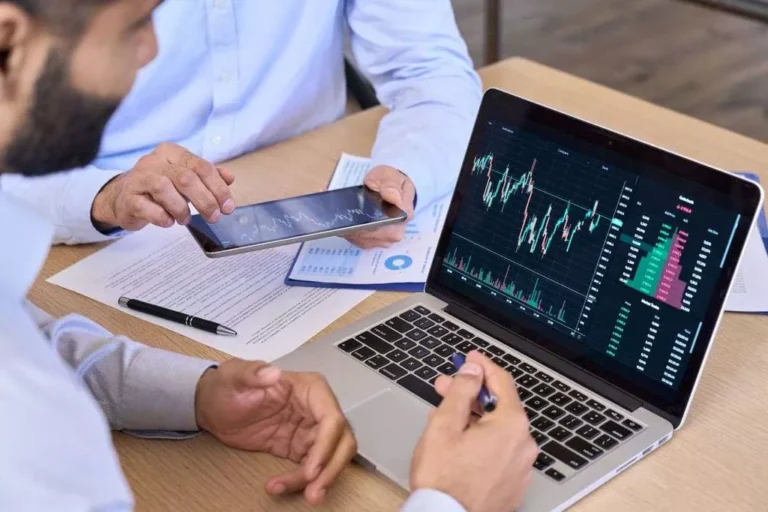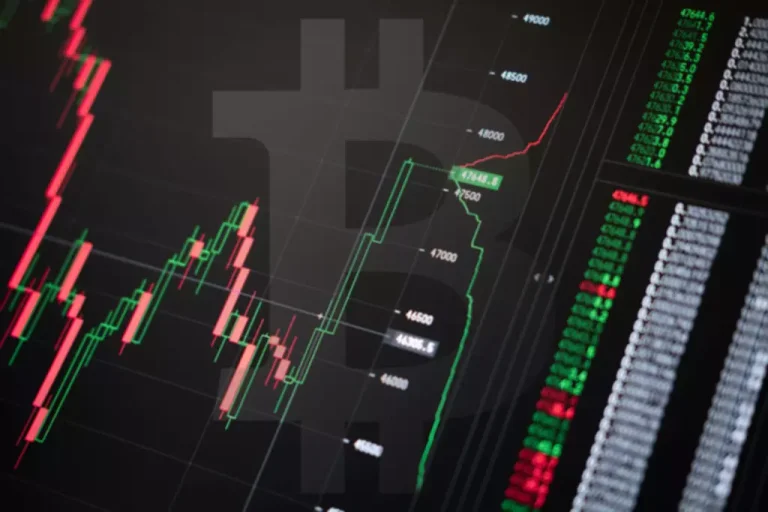Content
See Carr and Lee (2009) for an overview of volatility derivatives and Demeterfi et al. (1999b) for an in depth review of variance swaps. The table below presents this statistic for each asset or index tracked by the data tool. OneSafe brings together your crypto and banking needs in one simple, powerful platform. https://www.xcritical.com/ To view your holdings in one of our investment products, please use the access details provided to you by your administrator.
How High Can Bitcoin’s Price Go?
Speaking of finding opportunities, YouHodler provides you with the tools to capitalize on Proof of work volatility. We have numerous features that help you long or short the market, multiplying your crypto up to x50 in the process. Try to find crypto which is trending upwards, wait for volatility to strike, and get into the sale just before the value accelerates.
What Is Volatility in the Crypto Market?
Such results potentially signal a stronger influence of the jump part to explain future cryptocurrency volatility. Section 4 includes the results of the empirical analysis, from the model estimation using panel data to the robustness check by repeatedly fitting the same model specification over a different time window. In addition, we carry out the individual estimation of the same model for every entity in the cryptocurrency cross-section to disentangle the aggregate results and validate them. Then Section 6 discusses the key findings and the implications of our results for the cryptocurrency ecosystem and Section 7 provides the takeaways from the crypto volatility volatility analysis.
Cryptocurrencies BTC vs. USDT As Quote Currency
Katsiampa et al. (2019a) explores the volatility co-movements of eight cryptocurrencies on hourly data, while Sensoy et al. (2021); Ampountolas (2022) explore the spillover effects on the volatility of high-frequency cryptocurrency returns. Ji et al. (2021); Zhang et al. (2019) investigate the stylized fact of high-frequency return in terms of the Hurst Exponent. Katsiampa (2019) find asymmetric effects between good and bad news among cryptocurrencies.
Appendix A Additional Estimation Results
The more volatility there is, the more opportunities there are for you to earn interest as high as 365% and multiply your crypto. However, volatility tends to happen between 8 am and 4 pm local time so if you are a crypto trader, you can probably find the most opportunity there. This is a decentralized volatility index that can be customized for crypto traders to use. It’s publicly available, updates in real-time, and allows users to hedge against impermanent loss. Created by Professor Dan Galai, you can use it to monitor the volatility of USDC and ETH.
The fear gauge shows data from 2020 onwards and can be used to analyze trends in crypto prices. The model-free CVX index should yield a better estimate for markets’ expected volatility than the CVX76. However, due to the assumption of normally distributed log-returns in the Black-76 method, the (CVX-CVX76) spread is an interesting indicator of market implied tail-risk. More specifically, the two indices share the strong statistical bound of cointegration, which is temporarily distorted during heavy-tailed markets. An error correction model shows that said distortions have an average half-life of roughly 17 h. Changes in the spread between both indices, i.e., deviations from the equilibrium, provide information as an indicator of market implied tail-risk.
There is no denying that bitcoin is volatile as an investment asset class, both on an absolute basis and when compared to traditional asset classes. In fact, from 2020 to 2024 (chosen to capture at the most recent four-year cycle in bitcoin), bitcoin has been three to nearly four times as volatile as various equity indices, as shown in the chart below. 8 show that—unsurprisingly—expected volatility is usually higher for cryptocurrencies than traditional assets. The two exceptions are volatility of volatility (VVIX) and crude oil volatility (OVX, not-shown). The latter recently saw its highest levels since inception in 2008, which was primarily driven by the 2020 oil price war between Russia and Saudia Arabia and is therefore of no further interest to this study.
However, the currently relatively large and varying number of strikes and expiries entering the index increases complexity and, thus, makes it harder to physically replicate the index. That being said, decreasing the number of assets by focusing on fewer nodes would increase concentration risk and make the index more susceptible to manipulation. Considering that the young cryptocurrencies derivative market cannot provide the liquidity that is available on mature markets, we decided in favour of diversification over a larger number of strikes and expiries. This assessment might be updated once the liquidity situation for cryptocurrency derivatives improves. The research on the volatility of crypto-assets is dominated by questions on portfolio risk, such as the assessment of this new asset class’s potential for portfolio diversification or hedging.
However, it is well established that (cryptocurrency) returns are heteroskedastic and heavy-tailed (Osterrieder & Lorenz, 2017), and thus, experience returns that are larger and in higher frequency than expected under a normal distribution. We will revisit the differences between CVX and CVX76 when analyzing the empirical data in the following section. The term structure is not evenly spaced; the first two nodes are short-term options with 1 and 2 days to maturity. Prices of far expiry nodes, e.g., 6M and 12M, cannot be expected to be as meaningful and stable as for 1D or 1W.
- While there are debates over how much it impacts the average price fluctuations of crypto assets, there’s no denying it does.
- See our Investment Plans Terms and Conditions and Sponsored Content and Conflicts of Interest Disclosure.
- The inversion of the traditional leverage effect and the significant influence of FoMo necessitate reconsidering the investment approach to this asset class.
- This makes sense because a ratio of addresses in profit and realized volatility should be viewed as interacting positively when the numerator is rising and denominator is falling (rising addresses in profit and falling volatility).
- A store of value is an asset’s function that allows it to maintain value in the future with some degree of predictability.
This is not to say that bitcoin has not experienced significant price drawdowns or high standard deviations to the downside, but the key factor is that there have been more instances of the price moving quickly up versus down over time. In traditional finance, volatility is synonymous with “risk.” Therefore, higher volatility corresponds to higher actual or perceived risk. Implied volatility is also suggesting a steep increase in volatility through the remainder of 2024.

Additionally, the cryptocurrency market’s structure, which includes both centralized and decentralized platforms, creates unique arbitrage opportunities. These factors lead to a slower assimilation of information into cryptocurrency prices as the market navigates through these dual layers of activity. This complex and evolving landscape underlines the importance of understanding the unique aspects of the cryptocurrency market, particularly its reduced volatility persistence, and memory, shedding light on its distinct behavior and challenges. The financial econometrics literature has extensively investigated such relationships at a daily frequency, usually through Generalized AutoRegressive Conditional Heteroskedasticity, GARCH-like, (Bollerslev 1987) models. Which is nonzero only when the daily return of the asset under study is negative.

This finding motivates a deeper investigation into the underlying factors that contribute to these distinctive volatility patterns. The cryptocurrency market, characterized by its innovative technologies and trading mechanisms, diverges significantly from equity markets. The increase in on-chain activity, though still less predominant than off-chain trades, introduces novel financial dynamics not present in traditional finance.
As institutional investors step into the game and technologies evolve, grasping these factors becomes vital. This article aims to delve into the aspects that drive cryptocurrency volatility, the stabilizing function of institutional participation, and the impact of regulations and project evolution on market steadiness. When crypto traders diversify their portfolios, they buy multiple digital assets with different risk profiles rather than concentrating all their funds into one cryptocurrency. For example, some traders buy Bitcoin to take advantage of its relative stability versus more speculative altcoins.
This causes volatility in the financial market, as it reduces the purchasing power of a country overall. Research shows that countries with better employment regulations suffer from less inflation as a result. These employment factors include coordinated wage systems and strong unions for workers. YouHodler promotions are not targeted at UK investors, and bonuses or loyalty programs like the rewards programme or sign-up offers will not be available to residents of the UK. An overview of all CBOE volatility indices is available at /products/vix-index-volatility/volatility-indexes. More precisely, a static holding of put options with strikes below an arbitrary cut-off level and call options with strikes above.
However, there are many concerns regarding regulatory scrutiny, market manipulation and the volatility inherent in cryptocurrencies that might affect the approval process and the subsequent performance of Bitcoin ETFs. When there’s volatility, the price is fluctuating downwards, upwards, or both rapidly. High volatility can create opportunities for traders – especially those who use short-term strategies. Armed with the right knowledge and technique, you can maximize the potential of volatile trading. We created an in-depth guide explaining exactly how to use volatility to go beyond your trading goals. When these movements become too fast and unpredictable, though, they’re defined as volatile.
